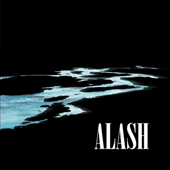

released in 2007

CD Review: ALASH
by throatsinger
14 July 2007
This 2nd effort by the group is fine collection of 16 tracks which combines Tuvan standards such as Ene-Sai (recorded by HHT [Huun Huur Tu] as Ancestors) and Dynggyldai; demonstrations of khoomei styles such as borbangnadyr, ezengileer; more modern, upbeat arrangements as in Oitulaash Xeveri; and a beautifully sung and accompanied, slow take of Daam Dozü, a traditional song of the Saryglars (Yellows), one of the major Tuvan clans.
Daam Dozu is one of my favorites; others include an original arrangement by Alash, Subudai, written by Bady-Dorzhu and Tuvan instrument builder Sergei Sotpa, named for Chingis Khan's famed Tuvan general. The surprisingly soft, melodic and sentimental piece offers a beautiful close to the cd. Also, Ayan Shirizhik offers a lovely, delicate rendition of the "rolling" borbangnadyr.
There is no shortage of Tuvan musicians or singers these days; in fact the number of individuals and groups performing is nothing short of astonishing for a republic of such tiny population (a bit over 300,000 with perhaps three quarters ethnic Tuvans) and there are many singers with very impressive throat-singing technique. But good technique alone doesn't make for good music. Alash succeeds because because they have beautiful emotional voices, with tones and expressiveness that match their vocal gymnastics. Together with good instrumental skills, and a maturing musical vision, this makes for a fine listening experience, indeed!
The cd also comes with a very nicely done booklet, with notes by manager/producer Sean Quirk. Sean (who begin his throat-singing journey as my student in the late '90s, and now lives in Tuva; hey, I'm proud, can you blame me?) includes insightful background info, as well as English transliterations and translations of all the lyrical pieces (gotta love that!).
The cd's only weakness, and a minor one at that is the recorded sound. It's not bad, but the mix and choice of reverbs, etc., could use some improvement. But it's a minor quirk (pun intended); anyways, they can easily learn to fix such production issues next time. Fortunately, it's easier to improve production niggles than weak music, and these lads have the musical goods and then some.
Captivating Tuvans
by Angel Romero
29 August 2007
The Tuvan throat singing tradition continues strong thanks to young musicians who are studying and preserving this fascinating vocal style. Alash is one of such groups, formed in the basement of the Kyzyl Arts College in Tuva’s capital city.
The quartet that recorded the CD is composed of musicians who sing and play a variety of traditional instruments. The result is a mesmerizing combination of solo and ensemble style throat singing, with singers playing different parts with different tones.
“We are inspired by the music of our grandparents, and their grandparents, and all the great Tuvan and Central Asian musicians of the post-Soviet era – Tuva Ensemble, Huun-Huur-Tu, Chirgilchin, Sarymai, Andrei Mongush and Alexander Sarzhat-ool,” notes band member Mai-ool Sedip. “We are also influenced by Sun Ra and Jimi Hendrix. We compose new songs, and arrange songs that we remember from childhood, such as "Saryglar."
CD Review: Alas...Alash!
by Matthew Forss
16 August 2009
In recent years, a slew of musical abums and compilations devoted to throat-singing from the steppes of Central Asia have graced the stores and charts. Those familiar with Huun Huur Tu, Egschiglen and Hanggai should pick up Alash's self-titled 2007 album of Tuvan throat-singing songs. Alash's ensemble does not incorporate Western instrumentation or modern beats. Instead, they present traditional songs with traditional instrumentation. Moreover, the liner notes detail the types of string and wind instruments used, including igil, kengirge, shynggyrash, limpi, murgu, byzaanchy, and doshpuluur. The instruments evoke images and sounds of nature indicative of indigenous Tuvan surroundings of grasslands, rivers, and animal galloping. At times the vocals seem otherworldly, but that only adds to the mystique of the Tuvan musical culture. The liner notes include a brief introduction to the music, throat-singing styles, and lyric translations from Tuvan to English by Sean Quirk.